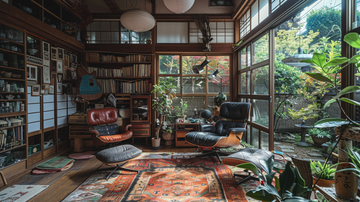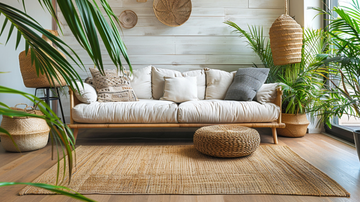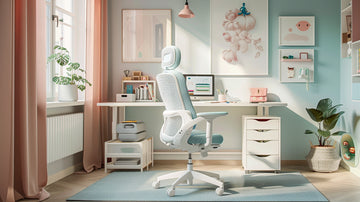Introduction to Second-Hand Furniture
Second-hand furniture, also known as pre-owned or used furniture, refers to pieces that have had a previous owner or have been previously used. This encompasses a wide range of items, from vintage finds to gently used modern pieces. The concept of second-hand furniture has gained significant popularity in recent years, driven by a combination of economic, environmental, and aesthetic factors.
Embracing second-hand furniture offers numerous benefits, including cost savings, environmental sustainability, and the opportunity to acquire unique and one-of-a-kind pieces. By opting for pre-owned items, consumers can not only save money but also contribute to reducing waste and promoting a circular economy. Furthermore, second-hand furniture often carries a sense of history and character, adding charm and personality to living spaces. (Source)
Cost Savings with Second-Hand Furniture
One of the most compelling benefits of purchasing second-hand furniture is the significant cost savings it offers. Buying pre-owned pieces can often result in savings of up to 50% or more compared to the price of new furniture. This financial advantage makes second-hand furniture an attractive option for those on a budget or looking to stretch their dollars further.
Beyond the initial purchase price, second-hand furniture can also provide long-term cost savings. Well-constructed pieces can last for years, even decades, with proper care and maintenance. This longevity eliminates the need for frequent replacements, ultimately saving money over time. Additionally, by choosing second-hand options, you can afford higher-quality furniture that might have been out of reach when purchased new.
For those furnishing a new home or apartment, the cost savings associated with second-hand furniture can be substantial. Instead of depleting your budget on brand-new pieces, you can allocate funds towards other essential expenses or investments. This flexibility can be particularly beneficial for individuals just starting out or those with limited financial resources.
Environmental Benefits of Second-Hand Furniture
Choosing second-hand furniture is an eco-friendly choice that significantly reduces waste and promotes sustainable practices. The furniture industry has a substantial environmental impact, with millions of tons of furniture waste ending up in landfills each year (source). By opting for pre-owned pieces, you are giving a new life to existing furniture and preventing the need for additional manufacturing and resource consumption.
Furthermore, new furniture often releases high concentrations of volatile organic compounds (VOCs) during its first year, contributing to indoor air pollution (source). Second-hand furniture has already undergone this off-gassing process, making it a healthier choice for your home environment. Embracing second-hand furniture is a simple yet impactful way to reduce your carbon footprint and support a more sustainable future.
Unique and Vintage Finds
One of the most alluring aspects of second-hand furniture is the opportunity to uncover unique, one-of-a-kind pieces that possess a rich history and character. Unlike mass-produced, cookie-cutter furniture, vintage and antique pieces offer a sense of charm and individuality that can breathe new life into any living space. From intricately carved wooden armoires to mid-century modern chairs with distinct lines and curves, these timeless treasures have stood the test of time, bearing the patina of age and the stories of previous owners.
Exploring second-hand markets, thrift stores, or online marketplaces like Chairish can be an exhilarating adventure, as you never know what unique gem you might uncover. These one-of-a-kind finds not only add visual interest and personality to your home but also serve as conversation starters, inviting guests to appreciate the craftsmanship and history behind each piece.
Quality and Durability of Second-Hand Furniture
Contrary to the misconception that second-hand furniture is inherently low-quality or fragile, many pre-owned pieces are exceptionally well-crafted and built to last. As noted in a New York Times Wirecutter guide, furniture made from materials like solid wood, high-quality wood veneer, steel, stone, and glass tend to be highly durable and capable of withstanding years of use.
Vintage and antique furniture, in particular, was often constructed with superior craftsmanship and attention to detail, using traditional joinery techniques and sturdy materials. These pieces were designed to be passed down through generations, making them excellent candidates for second-hand purchases. With proper care and maintenance, well-made second-hand furniture can easily outlast many modern, mass-produced items.
Customization and Restoration Opportunities
One of the significant advantages of second-hand furniture is the potential for customization and restoration. Unlike brand-new pieces, pre-owned furniture offers a blank canvas for creative expression and personalization. With a little elbow grease and a touch of imagination, you can breathe new life into a once-loved item, transforming it into a unique and one-of-a-kind piece that reflects your style and personality.
From refinishing and repainting to reupholstering and adding decorative elements, the possibilities are endless. For those with a flair for DIY projects, second-hand furniture presents an exciting opportunity to flex their creative muscles and put their skills to the test. Even if you're not particularly handy, there are countless online tutorials and resources available to guide you through the process, making customization accessible to everyone. Customizing an IKEA Hemnes China Cabinet is a prime example of how a little creativity can transform a standard piece into something truly unique.
Moreover, customizing second-hand furniture is an eco-friendly and sustainable choice, as it extends the lifespan of an item that might otherwise end up in a landfill. By breathing new life into a pre-loved piece, you're not only creating something special for your home but also reducing your environmental footprint and embracing a more conscious way of living.
Supporting Local Businesses and Communities
Purchasing second-hand furniture from local stores and charities provides a valuable boost to the local economy. Many second-hand furniture retailers are small businesses deeply rooted in their communities. By choosing to shop at these establishments, consumers directly contribute to the success and growth of these local enterprises, helping to create job opportunities and foster a thriving local business ecosystem.
Furthermore, many non-profit organizations and charities rely on the sale of donated second-hand furniture as a crucial source of funding for their initiatives. When individuals purchase from these charitable organizations, they not only acquire affordable furniture but also support various noble causes, such as providing assistance to those in need, funding community programs, or promoting environmental sustainability. This symbiotic relationship between consumers and local second-hand retailers fosters a sense of community and social responsibility. Source: Benefits of Buying Things Second Hand
Finding Second-Hand Furniture: Tips and Strategies
When it comes to finding quality second-hand furniture, both online and offline sources offer excellent opportunities. Online marketplaces like Facebook Marketplace, OfferUp, and Craigslist (source) are great places to start your search, allowing you to browse listings from the comfort of your home. Additionally, websites like Chairish and Etsy (source) specialize in vintage and antique furniture, offering a curated selection of unique pieces.
Offline, don't overlook local thrift stores, consignment shops, and estate sales, which can be treasure troves for one-of-a-kind finds. Flea markets and garage sales are also excellent sources for affordable second-hand furniture. It's advisable to visit these places regularly, as inventory changes frequently. Building relationships with shop owners or vendors can also provide insider knowledge on upcoming arrivals or special deals.
Inspecting and Evaluating Second-Hand Furniture
When considering second-hand furniture, it's essential to inspect and evaluate its condition thoroughly. This step ensures that you make an informed decision and avoid potential issues or disappointments. Here are some tips to help you assess the quality and condition of second-hand furniture:
1. Examine the structure and joints: Check for any loose joints, cracks, or signs of wear and tear. Gently rock the furniture to test its sturdiness. A well-constructed piece should feel solid and stable.
2. Inspect the upholstery: Look for any stains, tears, or excessive wear on upholstered furniture. Check for any unpleasant odors, which may indicate mold or other issues. If possible, remove the cushion covers to inspect the foam and padding underneath.
3. Test the functionality: Open and close drawers, doors, and cabinets to ensure they operate smoothly. Check for any missing hardware or components. Sit on chairs and sofas to assess their comfort and support.
4. Look for signs of damage or repairs: Examine the furniture for any signs of previous repairs, such as mismatched finishes or patched areas. While minor repairs may be acceptable, significant damage or shoddy workmanship could indicate a lower quality piece.
5. Consider the materials and finishes: Evaluate the quality of the materials used, such as solid wood versus particleboard or veneer. High-quality finishes, like solid wood or leather, may be more desirable and durable than cheaper alternatives.
If possible, consult with a professional or experienced furniture restorer for a more thorough evaluation, especially for valuable or antique pieces. By taking the time to inspect and evaluate second-hand furniture, you can make an informed decision and find pieces that will serve you well for years to come. Consumer Reports provides additional tips on inspecting used items before purchase.
Addressing Concerns and Misconceptions
When it comes to second-hand furniture, there are often concerns and misconceptions that may deter people from considering this sustainable option. One common misconception is the belief that second-hand furniture is of poor quality or in poor condition. However, this is not always the case. Many pieces of second-hand furniture are well-made and have been properly cared for, allowing them to maintain their durability and aesthetic appeal. Additionally, with the rise of vintage and antique furniture, there is a growing appreciation for the craftsmanship and character that older pieces possess (Source).
Another concern that individuals may have is the cleanliness or potential for pests when purchasing second-hand furniture. However, reputable second-hand stores and sellers often thoroughly inspect and clean items before making them available for sale. It is also advisable to carefully inspect any piece of furniture before purchasing and to take appropriate measures, such as deep cleaning or treating for pests if necessary.
Furthermore, some may perceive second-hand furniture as lacking in style or being outdated. However, with the rise of upcycling and furniture restoration, there are numerous opportunities to customize and personalize second-hand pieces to fit one's unique style and aesthetic preferences. By embracing creativity and exploring different refinishing techniques, second-hand furniture can be transformed into unique and stylish pieces that reflect individual taste (Source).
Conclusion: Embracing Second-Hand Furniture
Embracing second-hand furniture offers a multitude of benefits that extend beyond personal gains. By choosing pre-owned pieces, you contribute to a more sustainable lifestyle, reducing the demand for new furniture production and minimizing waste. Additionally, you have the opportunity to uncover unique and vintage treasures that add character and individuality to your living spaces.
From cost savings and environmental consciousness to supporting local communities and businesses, second-hand furniture shopping aligns with values that promote a more responsible and mindful approach to consumption. As discussed throughout this article, the advantages of opting for second-hand furniture are numerous and compelling, addressing both practical and ethical considerations.
So, whether you're furnishing a new home, refreshing your existing decor, or simply seeking one-of-a-kind pieces, consider exploring the world of second-hand furniture. With the right knowledge and strategies, you can find high-quality, durable, and affordable furniture that not only meets your needs but also contributes to a more sustainable future. Embrace the joy of repurposing and give new life to pre-loved furniture while making a positive impact on the environment and your community. Source








